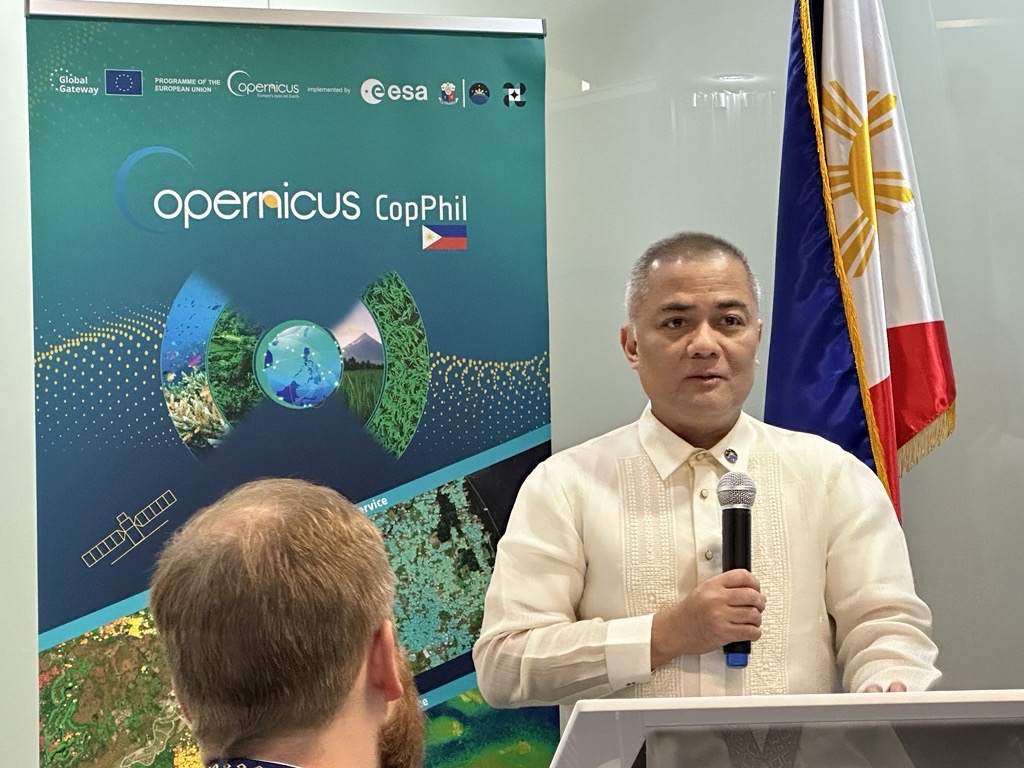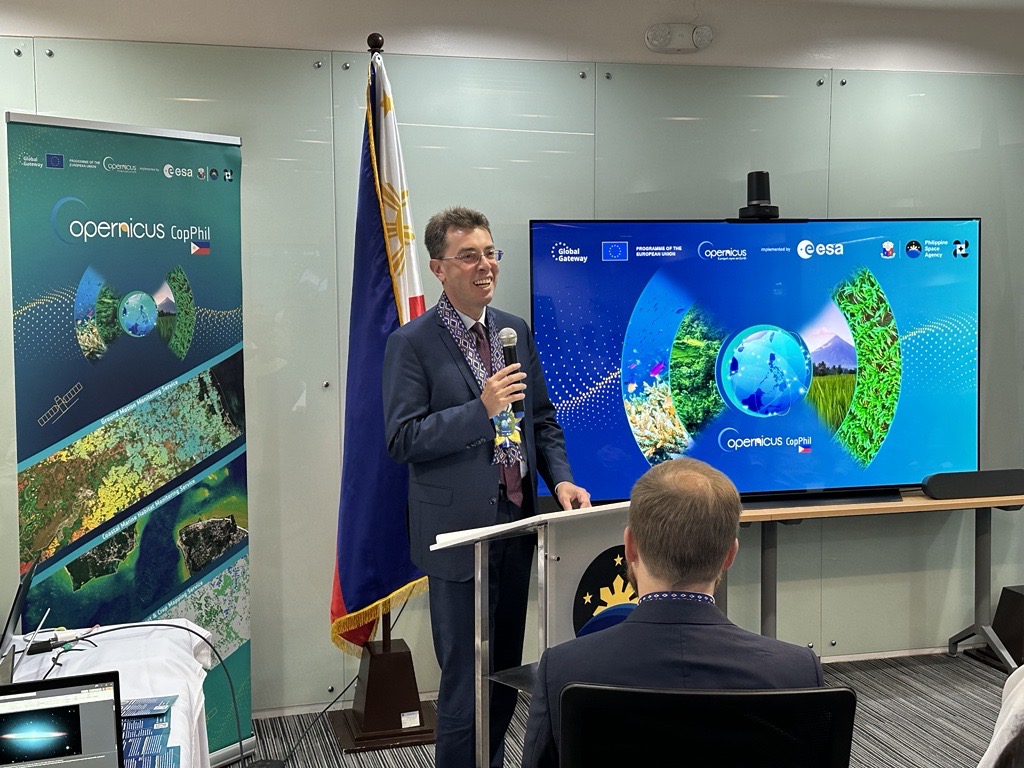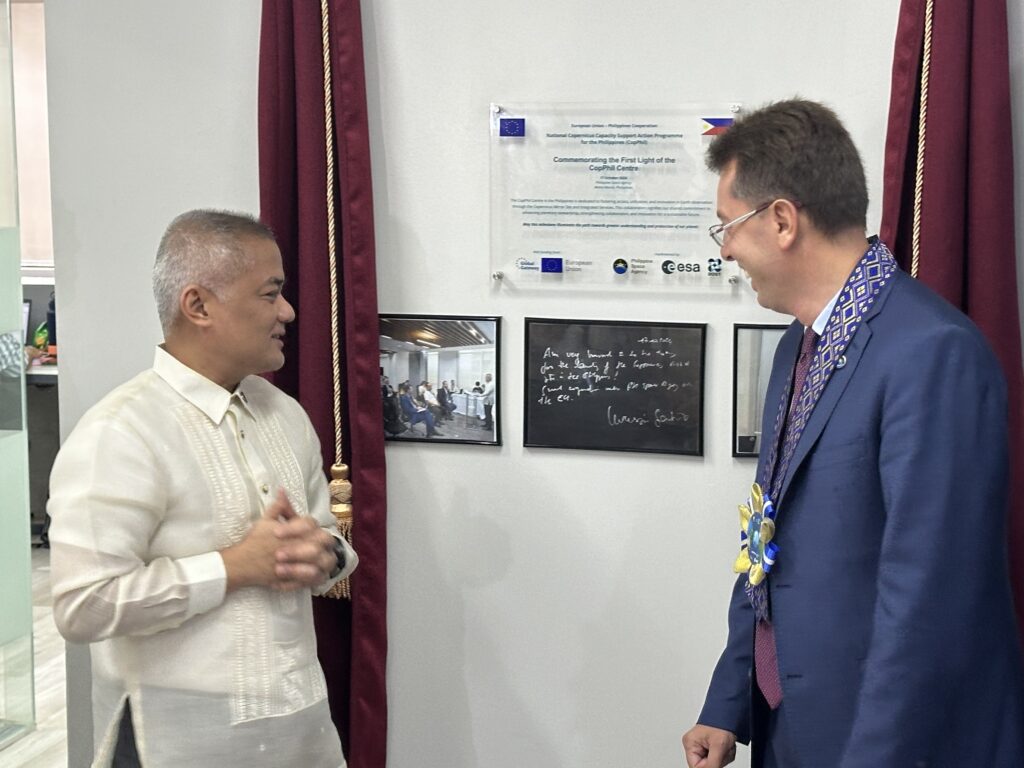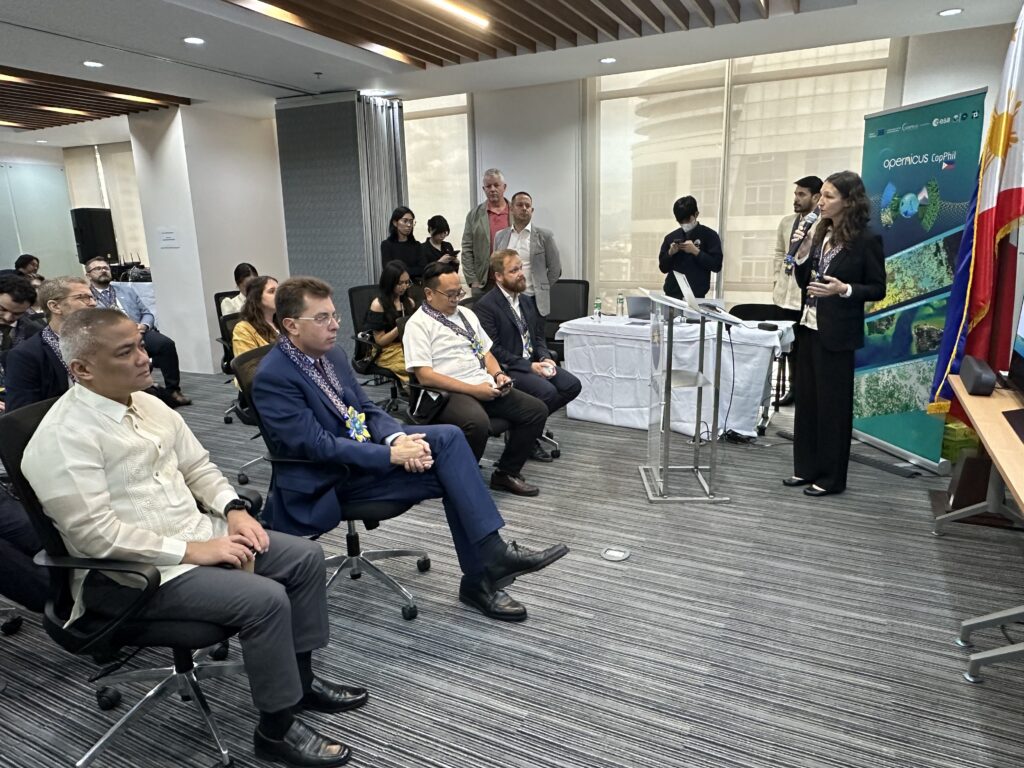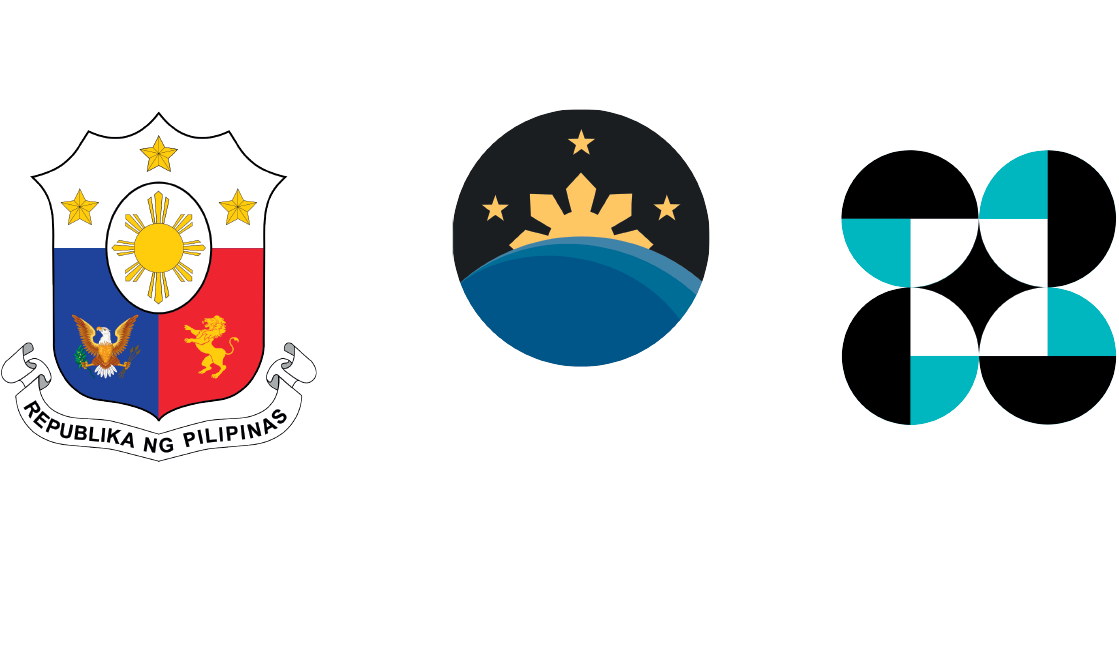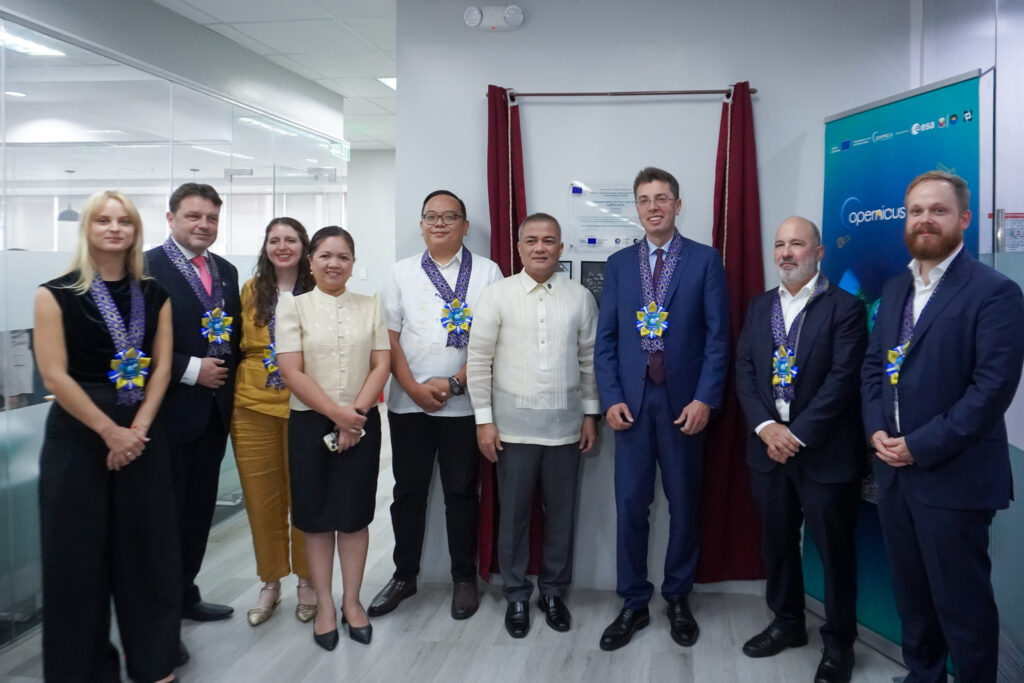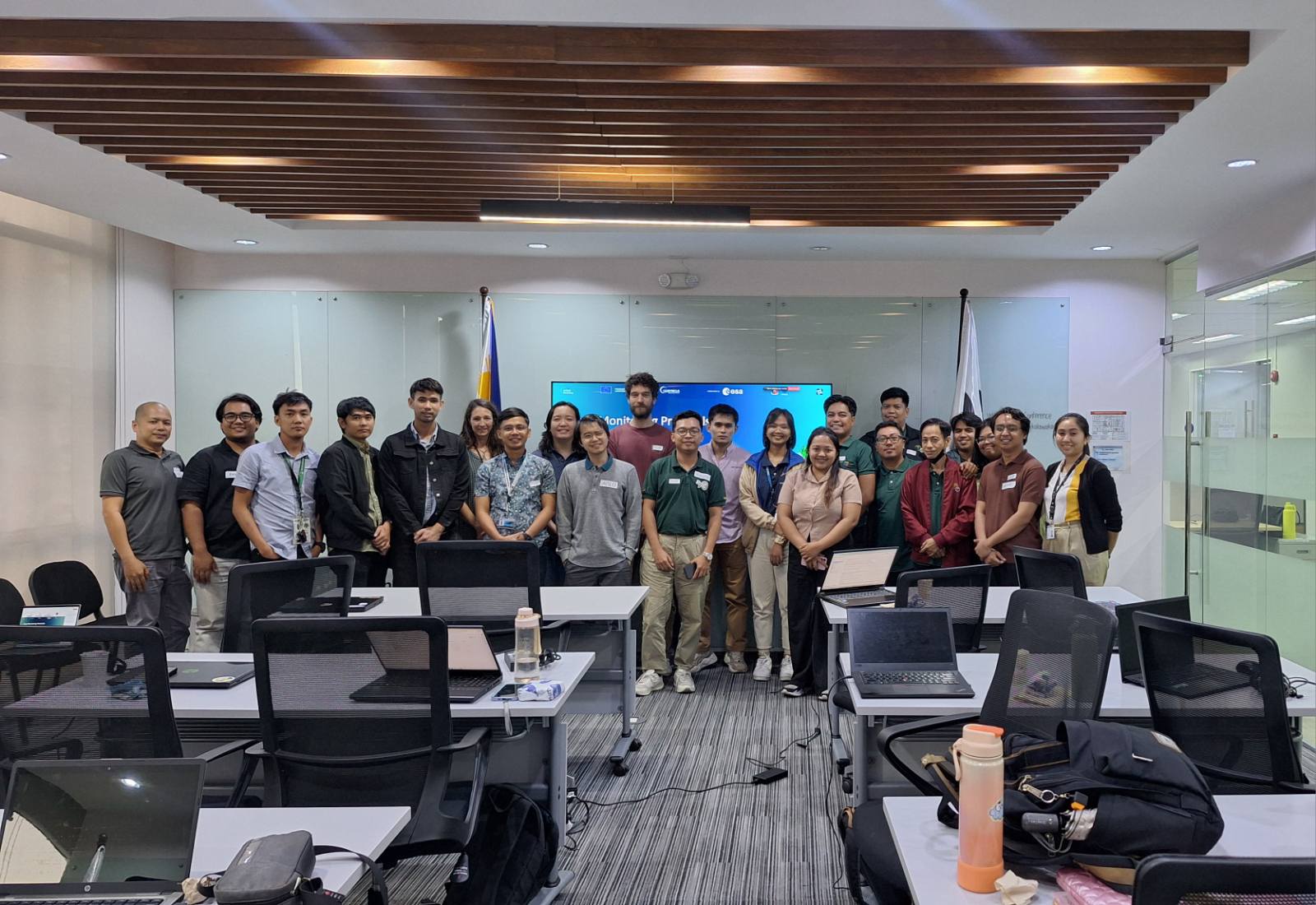On 17 October 2024, Filipino and EU representatives and partners of the EU Copernicus Programme in the Philippines (CopPhil) had the honour of unveiling the first results of the Centre’s activities at the CopPhil ‘First Light’ inaugural event in Manila, at the premises of the Philippine Space Agency. This event took place as part of a week-long series of encounters aimed at increasing awareness of the benefits which Copernicus data brings to the Philippines and to the region.
This ‘First Light’ event, which was moderated by broadcast journalist and television presenter Atom Araullo, included speeches from Dr. Joel Joseph S. Marciano, Jr., Director General of the Philippine Space Agency (PhilSA), His Excellency Massimo Santoro, Ambassador of the European Union to the Philippines, and Dr. Renato U. Solidum, Jr., Secretary of the Philippine Department of Science and Technology.
Dr. Marciano emphasised the value of Earth Observation technology for the Philippines, underlining the economic and social benefits that the CopPhil initiative will bring to the country. Ambassador Santoro echoed the value of Copernicus and the essential role of the EU’s Global Gateway strategy, through which CopPhil fosters knowledge, and skills transfer between the two regions. Finally, Dr. Solidum highlighted the important role CopPhil will play in helping the Philippines to leverage Earth Observation data to increase its resilience and hazard management capabilities.
Dr. Casper Fibaek, CopPhil Project Officer at the European Space Agency (ESA), outlined the initiative’s primary objectives, focusing on how CopPhil will support the country in addressing the consequences of climate change.
The first results of the activities related to the CopPhil IT infrastructure and the development of the Copernicus-based pilot services have then been presented.
The newly unveiled IT infrastructure, comprising an ad hoc cloud environment and the Copernicus Mirror Site, will facilitate the access to valuable Earth Observation data for users across the Philippines. Additionally, the CopPhil initiative website was inaugurated, stressing its role as a central hub for Copernicus-related Earth Observation information in the Philippines.
On top of that, representatives of the teams developing the CopPhil Copernicus-based pilot services showcased the initial results of their technical developments, including use cases illustrating how Filipino stakeholders will benefit from Copernicus free and open data. Among them were examples of farmers who will use the services developed under the Land Cover, Forest & Crop Monitoring thematic area to increase agricultural diversity by consulting maps of land use classification for various crops. Moreover, leveraging the Coastal Marine Habitat Monitoring services, researchers will better track coral bleaching episodes and the consequences of climate change on the coastal ecosystems of the Philippines. Finally, with the services in the Ground Motion Monitoring thematic area, local authorities will have access to robust, science-based and detailed data on ground movements, including landslides and subsidence, providing insights into these hazards thus increasing their ability to mitigate their impacts. It is also worth mentioning that these pilot services are developed in close collaboration with Filipino stakeholders and will be handed over to PhilSA for continued implementation after the end of the demonstration phase.
To conclude, this event marked only the beginning of the activities of the CopPhil initiative, which will further develop its mission of bringing Copernicus open and free data closer to users in the Philippines. In particular, the CopPhil Centre will soon provide trainings and stakeholder events to foster Earth Observation knowledge and skills transfer among users in the country.
The full livestream of the ‘First Light’ event can be found at this link.
